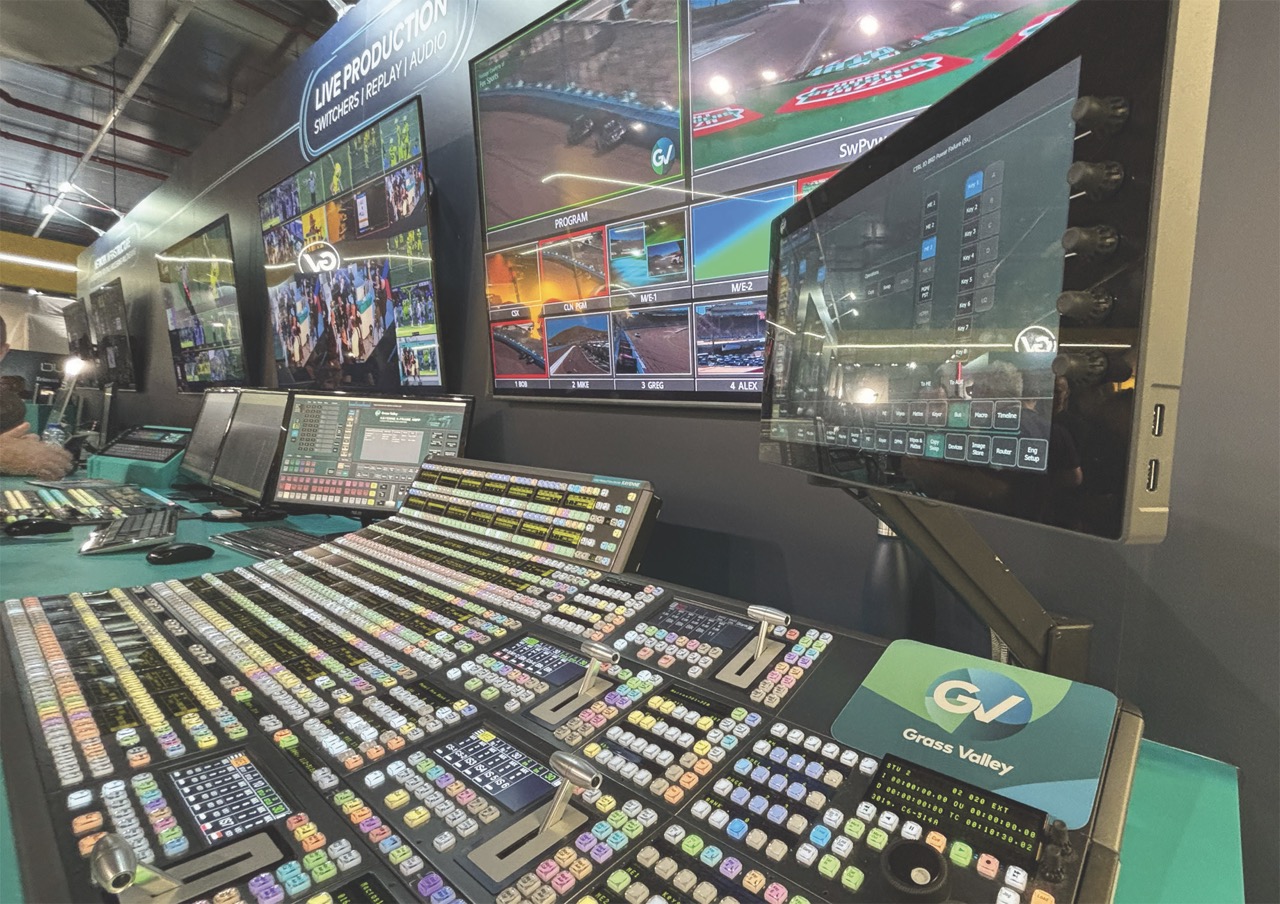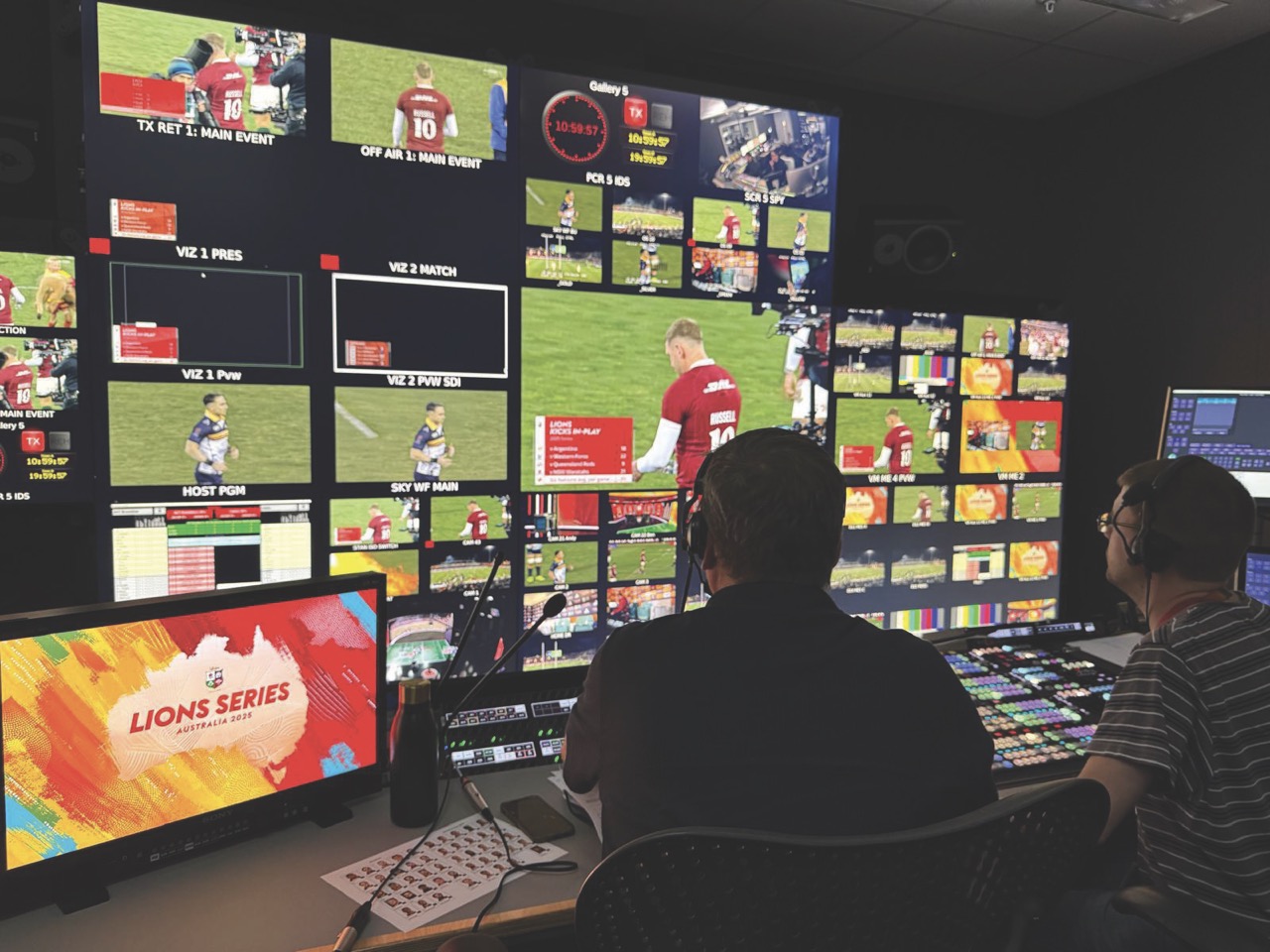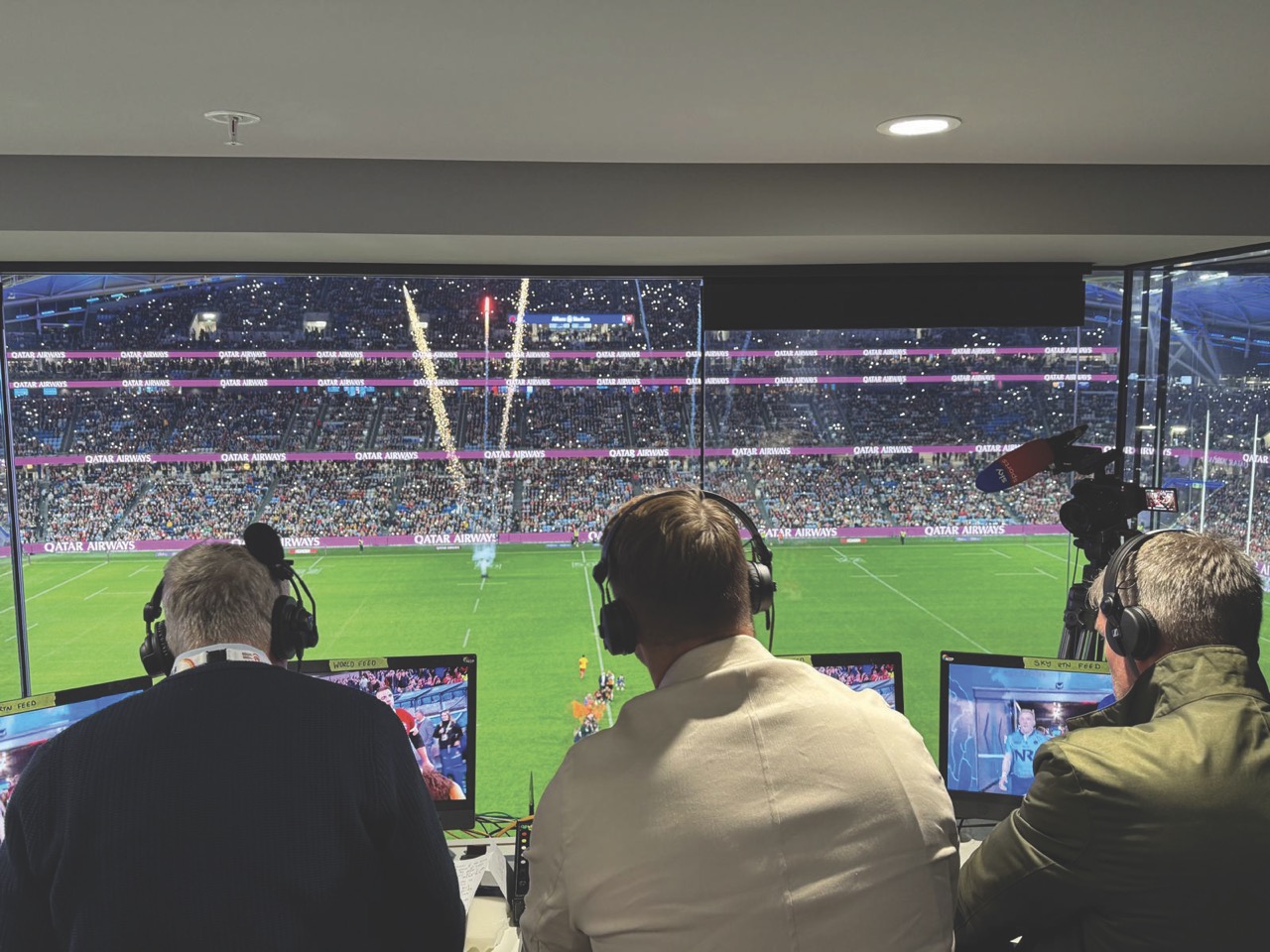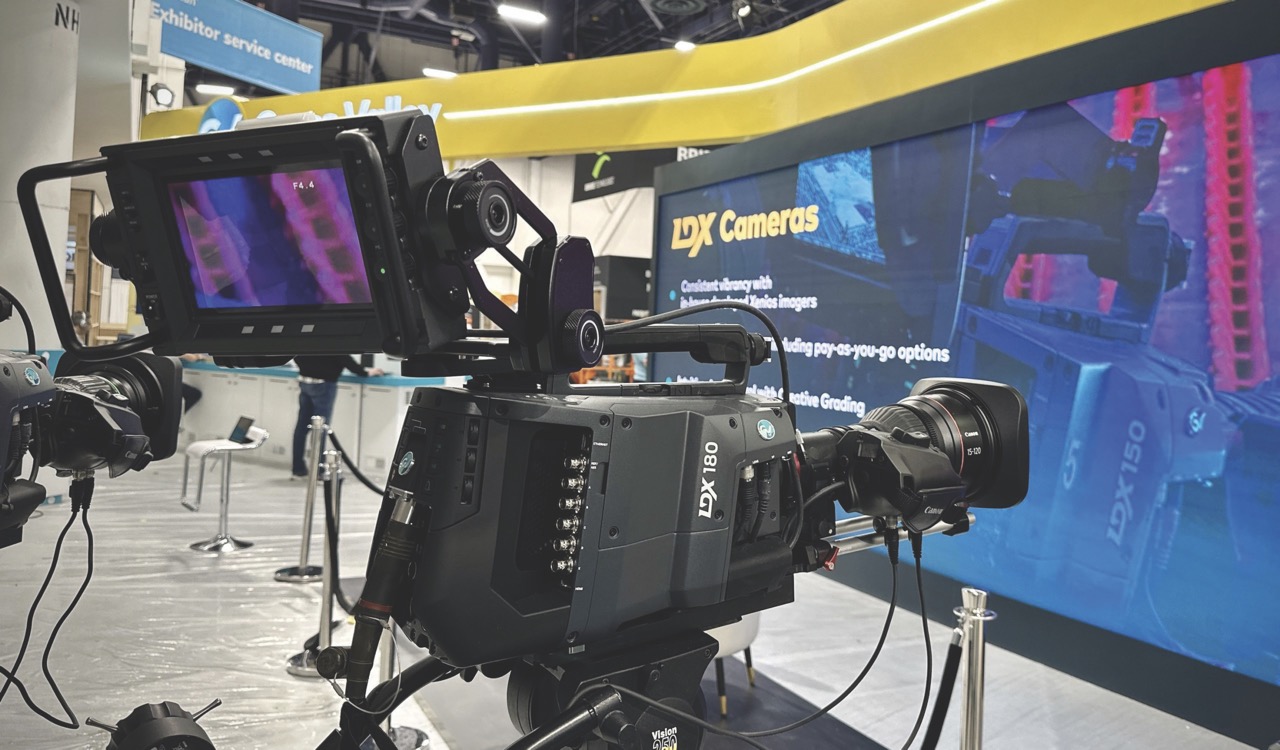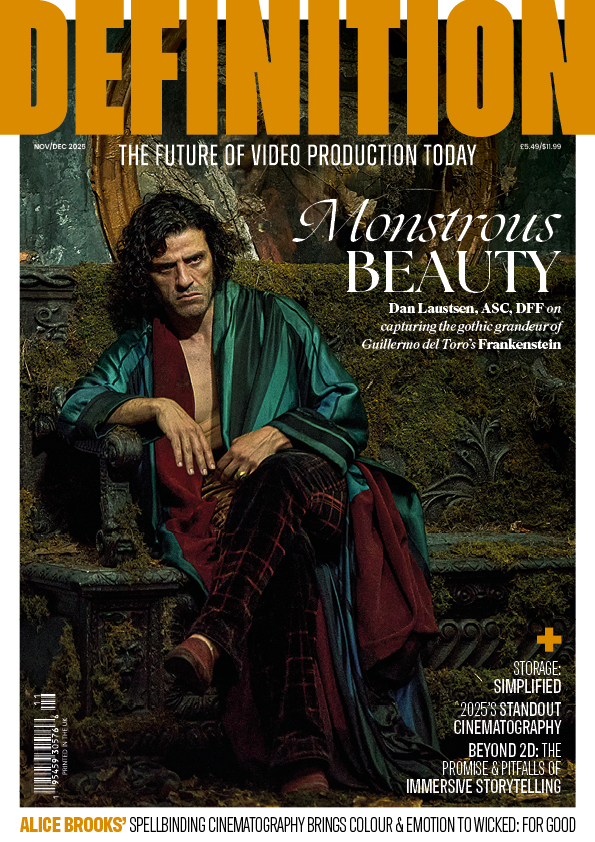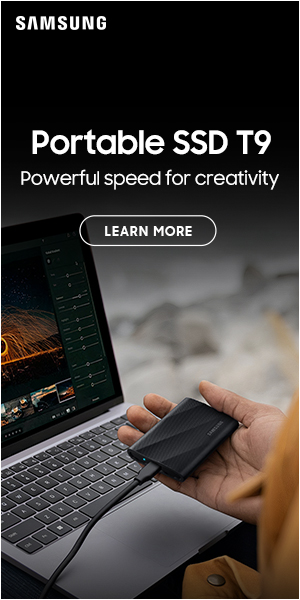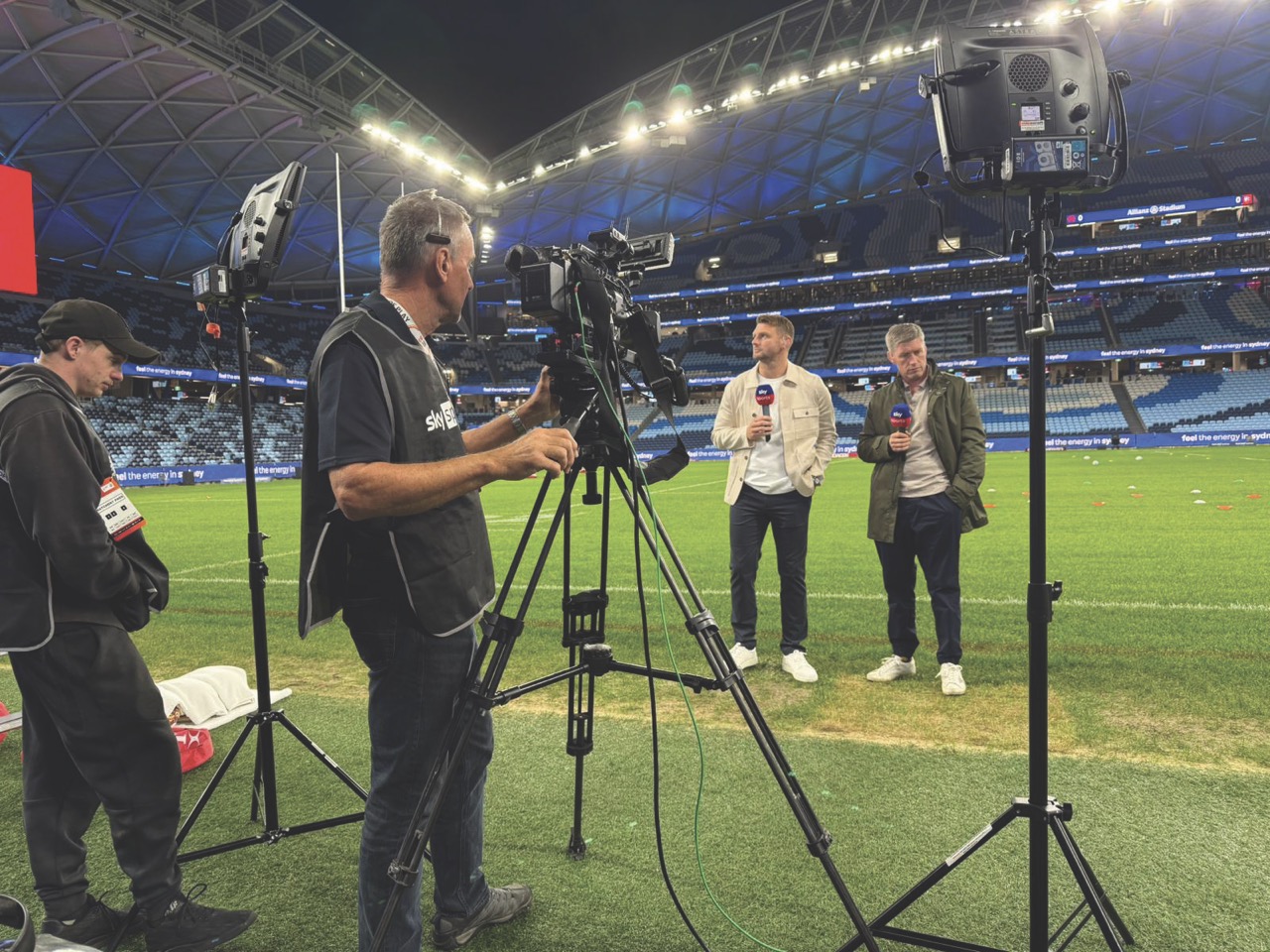
The world of cinematic sports
Posted on Sep 25, 2025 by Admin
Broadcast vendors are delivering cine-live tools for sports, says Adrian Pennington, opening up a wealth of creative possibilities & opportunities to get fans closer to the action
This season, Steadicams carrying cameras with cine-style capabilities will be allowed not just to patrol the touchline of Premier League football matches, but join players on the pitch for goal celebrations. The move is part of an evolving strategy to provide broadcasters with coverage that gets fans closer to the action, following a growing trend that makes a filmic look part of the matchday arsenal.
Cine cams are everywhere. They were featured at the FIFA Club World Cup this summer, included in coverage of the British & Irish Lions’ successful tour Down Under and used at Wimbledon. The trend kicked off in the US in 2020, when Fox Sports used an RF system – the Megalodon – to bring viewers cinematic imagery of NFL touchdown celebrations.
It also coincided with the rise in popularity of behind-the-scenes sports documentaries like Sunderland ’Til I Die and Formula 1: Drive to Survive, which elevated the production values of sports content. The primary desirable aesthetic of cine-style imagers is being able to enhance aspects of the story with a visually appealing shallow depth-of-field, although a handy secondary attribute is the ability to capture dramatic footage at high speed and play it back in slomo during breaks.
Not only are they a regular feature of major sports events, but the number of such cameras per event – handheld and transmitted via RF or cabled on tripods – is increasing. A shallow depth-of-field is typically achieved using larger sensors and wider apertures. Where early innovations used mirrorless full-frame prosumer models like the Sony A7 series – retrofitted for live broadcast – recently, manufacturers have developed Super 35 systems that more functionally fit the processing, colour science and control requirements of a live outside broadcast using 20 to 30 cameras.
Sony’s flagship VENICE camera can also be configured for live broadcast by adding a MultiDyne SilverBack V fibre optic adapter. The system puts all the signals needed for UHDTV production onto a single tactical or SMPTE hybrid fibre cable, ‘ensuring robust, trouble-free connectivity’ on any studio or remote production. RCP paint control is supported too, using the serial data connection, while genlock, intercom and tally are also provided.
In 2022, Sony went further and released the HDC-F5500, designed with live sports in mind. It has a Super 35 4K CMOS global shutter image sensor for shallow depth-of-field and high-frame-rate capability. It was used for the first time in Europe during the live broadcast of a Tyson Fury vs Dillian Whyte fight at Wembley by EMG UK and TNT Sports. The chief difference being its use of a single chip, Super 35 and PL mount rather than a three chip, 2/3in B4 mount.
This year, RED debuted a Cine-Broadcast Module for its V-RAPTOR cameras that supports live broadcast of 4K/60p signals, which CBS Sports has integrated into some of its productions. A broadcast colour pipeline enables live painting of RED cameras using traditional broadcast controls. The module is also compatible with EVS’s XT-VIA live production server, allowing broadcasters to enhance their workflows with 4x super slow-motion at 4K or 8x in HD.
According to EVS product manager Ignacio Revuelto: “This paves the way for cinematic-quality cameras to elevate sports productions.” Separately, EVS has updated its XtraMotion platform to create a cinematic effect by simulating a shallow depth-of-field in images captured on a traditional live production system camera. XtraMotion takes less than three seconds to apply super slow-motion, even when combined with other effects such as deblurring.
“There’s a definite requirement from the market for a filmic look, but we also know the results to date are mixed,” reports Klaus Weber, director of product marketing at Grass Valley. “In general, when the pictures look good, the workflow has been really cumbersome. It’s often difficult to incorporate digital cinematography cameras into existing production workflows.”
The Megalodon moniker hints at the clunky workflow required to produce silky images from cameras designed for drama when they’ve been jury-rigged into the live environment.
“Something our customers really don’t like is the lack of servo controls,” shares Weber. “They don’t want to fiddle around with additional attachments. And when paired with third-party universal control panels, existing systems often fall short of providing the necessary control, and in a live set-up, you simply don’t have time.”
That’s why Grass Valley went back to the drawing board, coming up with the LDX 180 – which should begin shipping around IBC Show time. Equipped with a Super 35 global shutter and CMOS imager, the unit is designed specifically for live workflows, working over SDI to SMPTE ST 2110 and integrating with Grass Valley’s existing LDX Series cameras.
“Achieving a filmic look in live production is a complex task that requires a careful balance of technical elements,” Weber explains. “The optimal camera for this purpose should feature a larger image sensor – preferably Super 35 – PL mount lenses, a global shutter and advanced real-time processing capabilities. Consistent colour science across different camera models within the same production is also crucial to maintain a uniform visual appearance.”
While most sports might benefit from a cine-style camera, the extent depends on the sport itself. In baseball, for example, the pitcher and batter will stand on the exact same position each time, so camera operators and producers know exactly how to frame and focus. Fox Sports even deployed Cooke Optics anamorphic lenses on Major League Baseball’s World Series to capture images that will be played out ahead of commercial breaks.
In soccer, it’s trickier. “Take a Champions League match, covered by 25 to 35 camera positions,” says Weber. “At least half of those are on the sidelines and in the stands, using 100x or more zoom lenses. Operators actually want more depth-of-field from these positions, not less, so those cameras wouldn’t be replaced by cine cams.”
The main A camera position is typically a 20-25x zoom, for which PL mount Super 35 glass is available (from Canon or Fujifilm). Weber thinks there’s a case for this position to be replaced or augmented with a cine cam.
Other than that, the main use of shallow depth-of-field is isolating fans in the background of stands or a coach cam, perhaps for pre-game team walk-ons (trialled by DAZN and FIFA during the Club World Cup).
“It might be that a third of the cameras in a Tier 1 soccer plan would benefit from a shallow depth-of-field, whereas live coverage of music concerts could be covered by a higher 50:50 ratio. There might also be a few cases where a complete production, end to end, will use just Super 35 cameras. But when you need a long zoom range with a 100x box lens, 2/3in is the only way.”
The integration of advanced signal processing features in live production cameras isn’t just a convenience, but a necessity. It ensures that all elements of the live broadcast – whether the main production feed, VAR system or camera shading – can operate efficiently, with minimal risk of error and without the burden of additional external equipment.
Weber explains that “this capability is essential in high-stakes environments like live sports or large-scale events, where maintaining a flawless broadcast across multiple platforms and standards is paramount.”
This story appears in the September/October 2025 issue of Definition


